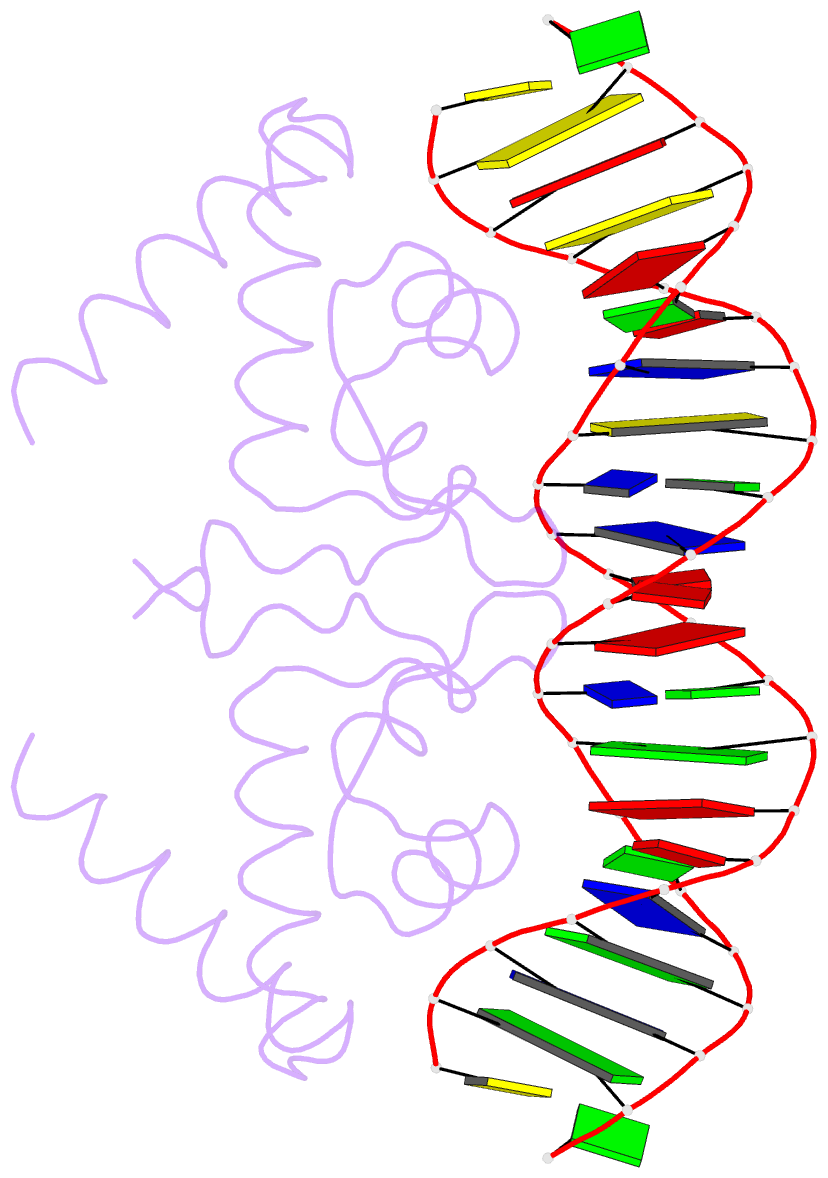Summary information and primary citation
- PDB-id
- 4r24; SNAP-derived features in text and JSON formats;
DNAproDB
- Class
- transcrption-DNA
- Method
- X-ray (2.25 Å)
- Summary
- Complete dissection of b. subtilis nitrogen homeostatic circuitry
- Reference
- Schumacher MA, Chinnam NB, Cuthbert B, Tonthat NK, Whitfill T (2015): "Structures of regulatory machinery reveal novel molecular mechanisms controlling B. subtilis nitrogen homeostasis." Genes Dev., 29, 451-464. doi: 10.1101/gad.254714.114.
- Abstract
- All cells must sense and adapt to changing nutrient availability. However, detailed molecular mechanisms coordinating such regulatory pathways remain poorly understood. In Bacillus subtilis, nitrogen homeostasis is controlled by a unique circuitry composed of the regulator TnrA, which is deactivated by feedback-inhibited glutamine synthetase (GS) during nitrogen excess and stabilized by GlnK upon nitrogen depletion, and the repressor GlnR. Here we describe a complete molecular dissection of this network. TnrA and GlnR, the global nitrogen homeostatic transcription regulators, are revealed as founders of a new structural family of dimeric DNA-binding proteins with C-terminal, flexible, effector-binding sensors that modulate their dimerization. Remarkably, the TnrA sensor domains insert into GS intersubunit catalytic pores, destabilizing the TnrA dimer and causing an unprecedented GS dodecamer-to-tetradecamer conversion, which concomitantly deactivates GS. In contrast, each subunit of the GlnK trimer "templates" active TnrA dimers. Unlike TnrA, GlnR sensors mediate an autoinhibitory dimer-destabilizing interaction alleviated by GS, which acts as a GlnR chaperone. Thus, these studies unveil heretofore unseen mechanisms by which inducible sensor domains drive metabolic reprograming in the model Gram-positive bacterium B. subtilis.





